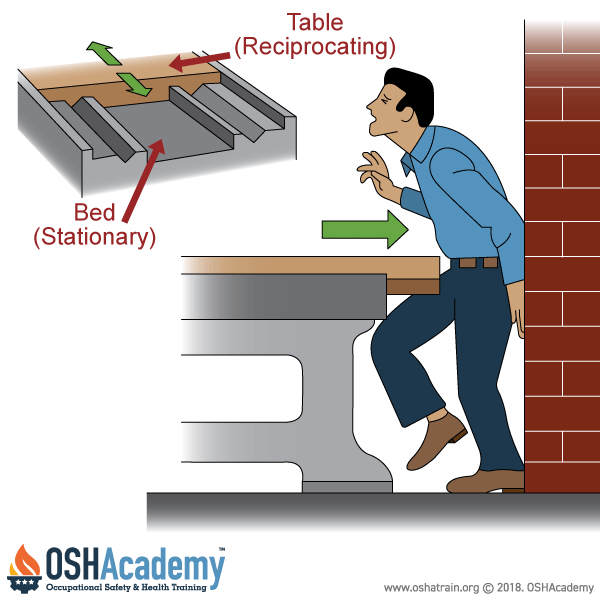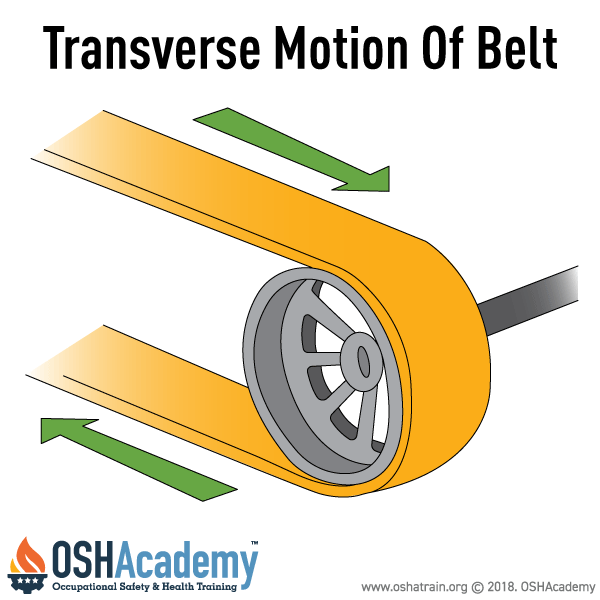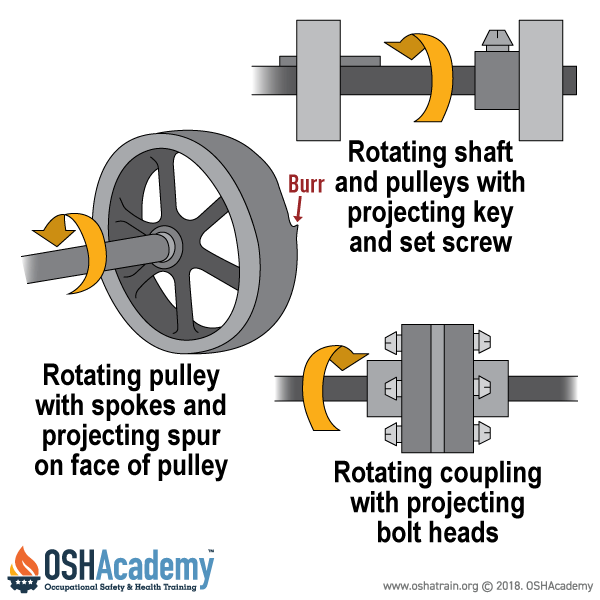Reciprocating Motions
Reciprocating motions may be hazardous because, during the back-and-forth or up-and-down motion, a worker may be struck by or caught between a moving and a stationary part.
Reciprocating parts, such as pistons in engines or pumps, can cause crush injuries if they come into contact with a body part or object. They can also create flying debris or projectiles if they fail or break apart.
Transverse Motions
Transverse motion (movement in a straight, continuous line) creates a hazard because a worker may be struck or caught in a pinch or shear point by the moving part.
Transverse motions, such as those in a moving conveyor belt or a reciprocating saw, can cause severe cuts or amputations if a body part gets caught in the mechanism. Workers should always keep a safe distance and avoid placing their hands or feet near moving machinery.
Rotating Shafts
Warning: Exposure to rotating shafts is the most dangerous machine safeguarding hazard.
It is so dangerous we wanted to mention it again before moving on to other topics. There have been numerous accidents due to exposure to rotating shafts and, unfortunately, most of these accidents result in a fatality.
The danger of exposure to rotating shafts increases when projections such as set screws, bolts, nicks, abrasions, and projecting keys or set screws are exposed on rotating parts.
Knowledge Check Choose the best answer for the question.
1-4. What is considered the most dangerous machine safeguarding hazard in the workplace?
You forgot to answer the question!



